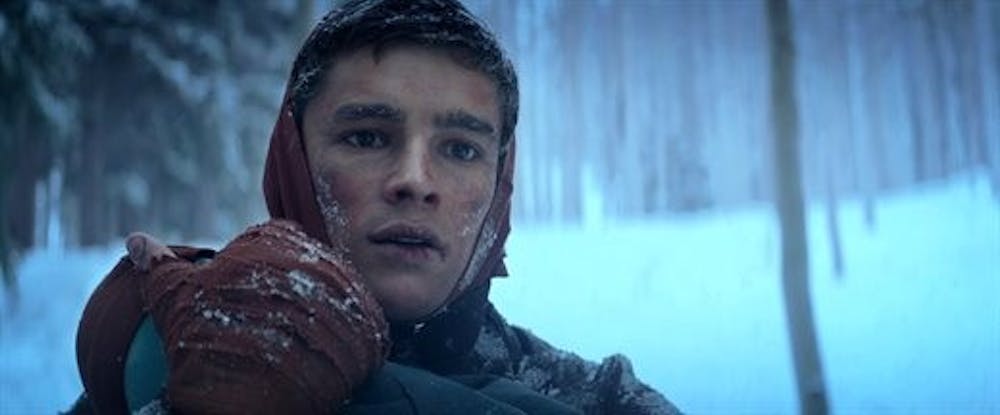The opinions and views expressed in this article are those of the author and do not reflect the opinion of Byte or Byte’s editorial board.
Louis Lowry, known for books like Number the Stars, The Anastasia Krupnik Series, and The Silent Boy, reached her peak when she wrote 1993’s The Giver. Lowry wrote about 12-year-old Jonas, who was chosen to receive memories of his society’s past from the giver, Jeff Bridges. Although in today’s film industry we’re plagued by dystopia mania within series’ like Divergent, The Maze Runner, and The Hunger Games; Lowry’s four-book series was different from all the others. These dystopian films include violence toward the government, including overthrowing leaders, taking over land, and bombing important buildings. She was able to tell a story of a government keeping humanity bottled up in one man, the giver, and how dangerous and cruel this burden can be. I believe the 2014 film’s lack of violence and blockbuster-esque appeal killed the film before it was even released, although it wasn’t the film’s fault that it didn’t continue.

Violence is a fantasy many of us crave to live which is why many video games, like The Grand Theft Auto Series, are popular. The Giver Series wasn’t written with violence in mind. I’m sure because the series was made for younger audiences and because of this, it could be one of the reasons why the film suffered at the box office. The Giver barely made back half its budget of $25 million at the box office, with only making a little over $12 million. In other words, this was a major flop with audiences.
At the end of the film, Jonas is seen holding Gabriel in a snowy forest, watching a nearby house decorated with Christmas decorations. For those who haven’t read the series, Jonas comes back into the story with the fourth novel, Son, which focuses on Claire, Gabriel’s mother. But much happens in-between books two, Gathering Blue and three, Messenger; the latter I consider to be the best novel of the quartet. Jonas’ town known as “The Community” turns out to be just one of many other communities in the series; with Gathering Blue focusing on Kira, a young girl with an impaired leg and the ability to dye colors into the fabric for her community except for blue.

Again, we’re faced with questions the elders and higher-up hierarchy refuse to answer in the series repeatedly. As Kira survives in a community of poverty and is left to die after her mother dies, we realize Lowry is not only talking about conformity by the dangers of independent thought, but also the importance of class hierarchy. In the novels, the character’s worth is measured by where they stand on the class pedestal. It’s possible the quartet can be called “anti-government” propaganda and could be the reason why it’s considered a banned book on many occasions. Lowry portrays the government as controlling and tyrannical. An example is shown in the first novel and film with Jonas’ father injecting “broken” infants with a deadly serum. It’s not uncommon for authors to write with underlying themes and anti-government is one of the oldest tricks in the book. But the author weaves in more than one or two morals. Lowry discusses what it means to be disabled and treated less than, along with being treated as a statistic more than a human being.

After Kira is saved in Messenger by friend Matty, referred to as “Matt” in Gathering Blue, readers can justify the actions of Jonas, Kira, and Matty. We have characters willing to die for their community, even enemies, to learn about life and experiences outside their own. Jonas was the first to attempt this and succeeded after arriving at a mysterious house via sled while carrying Gabriel. Thus, ending the film and leaving the viewers on a cliffhanger. Only this time, we don’t get an ending, not even a sequel. Don’t start something revolutionary if you don’t intend to finish it.
Another reason the series may not have continued was because of a lack of grounding with protagonists. Throughout the novels, readers are introduced to five main protagonists: Jonas, Kira, Matt, Claire, and Gabriel. Unlike the popular series’ that precedes it, like the ones mentioned earlier, Lowry’s quartet wanted readers to learn about the issue of dystopia from all angles: poor, rich, girl, boy, old, and young. The Giver was not about feminism, government exploitation, or even injustice but about what it means to be human. None of the protagonists seek to destroy anyone or challenge foes but to realize who they are under an oppressive environment. Witnessing emotion and learning difficult lessons are the relatable tendencies Lowry uses to empower her readers, and The Giver Series demonstrates this.
Sources: Box Office Mojo, Business Insider, Top10Films, The Giver Wiki
Images: Amazon, The Agony Booth, The New York Times
Featured Image: The Tangential
For more entertainment related content, visit us at Byte BSU!
"continued" - Google News
February 21, 2021 at 08:09AM
https://ift.tt/37ylPAo
7 Years Later: Why 'The Giver' Films Should Have Continued - Ball State Daily News
"continued" - Google News
https://ift.tt/2WiTaZN
https://ift.tt/2YquBwx
Bagikan Berita Ini














0 Response to "7 Years Later: Why 'The Giver' Films Should Have Continued - Ball State Daily News"
Post a Comment